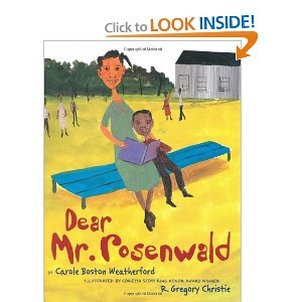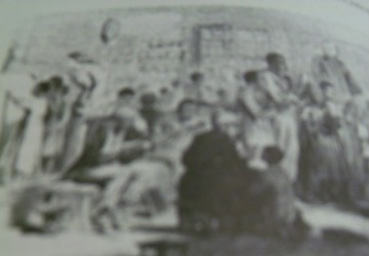Rosenwald Schools in Union County
Name (# of Teachers) Budget Year
Antioch (2) 1918-1919
Clarksville (1) 1922-1923
Craig (1) 1923-1924
Flint Ridge (2) 1923-1924
Gulledge (4) 1923-1924
Hudson (1) 1924-1925
Laney (1) 1924-1925
Liberty (1) 1926-1927
Marshville (2) 1919-1920
Marvin (1) 1923-1924
McCain (2) 1924-1925
Newfoundland (2) 1922-1923
Northville (2) 1918-1919
Piney Grove (2) 1925-1926
Redding Springs (2) 1926-1927
Rock Hill (1) 1922-1923
Waxhaw (3) 1924-1925
Zion (2) 1928-1929
Antioch (2) 1918-1919
Clarksville (1) 1922-1923
Craig (1) 1923-1924
Flint Ridge (2) 1923-1924
Gulledge (4) 1923-1924
Hudson (1) 1924-1925
Laney (1) 1924-1925
Liberty (1) 1926-1927
Marshville (2) 1919-1920
Marvin (1) 1923-1924
McCain (2) 1924-1925
Newfoundland (2) 1922-1923
Northville (2) 1918-1919
Piney Grove (2) 1925-1926
Redding Springs (2) 1926-1927
Rock Hill (1) 1922-1923
Waxhaw (3) 1924-1925
Zion (2) 1928-1929
Economy in the 1920s
When the schools were being built, sharecropping was the major source of income for African-Americans. Laws prevented land ownership, so former slaves had to rent land on which to grow cotton. Payment was made when the crop was sold. As before the Civil War, King Cotton was the major crop. In the 1920s, the soil was depleted and the price of cotton low. Even white farmers earned little more than enough to feed their families. (Tyson, 1999, p. 6). Furthermore, Jim Crow laws prohibited employers from hiring African American men to work with cotton millworkers, the majority of whom were white, females.
Despite little income, African-American families found ways to save pennies and contribute to the school building projects. They sold hand-made toys and box lunches. Men volunteered manual work in addition to their regular work (Weatherford, 2006). They were led in fund-raising by state agents from the Division of Negro Education, part of the State Department of Public Instruction, created in 1921 by the N.C. General Assembly (Hanchett, 1988). Employed by the division as supervisor of Rosenwald Buildings, Dr. George E. Davis, spearheaded fund-raising in the rural communities. A flyer announcing a rally for school building announced Davis as the key speaker at a rally at White Store school in 1928 (Hanchett, 1988). The community is near the Union County line, not far from Landsford Road, where Flint Ridge School was built.
Despite little income, African-American families found ways to save pennies and contribute to the school building projects. They sold hand-made toys and box lunches. Men volunteered manual work in addition to their regular work (Weatherford, 2006). They were led in fund-raising by state agents from the Division of Negro Education, part of the State Department of Public Instruction, created in 1921 by the N.C. General Assembly (Hanchett, 1988). Employed by the division as supervisor of Rosenwald Buildings, Dr. George E. Davis, spearheaded fund-raising in the rural communities. A flyer announcing a rally for school building announced Davis as the key speaker at a rally at White Store school in 1928 (Hanchett, 1988). The community is near the Union County line, not far from Landsford Road, where Flint Ridge School was built.
"Cyclone Destroyed School" Buried
Piney Grove Church
A short paragraph in The Monroe Enquirer on March 25, 1929, was written about a cyclone destroying Piney Grove school house, eight miles north of Monroe on Morgan Mill Road. No one was hurt because class was not held on Saturday. The teacher of 45 small children was identified as Miss Lois Pierce (Unknown, 1929).
On the second page, the story was buried. Today, such a catastrophe would have been front page news. The treatment of the event in the newspaper reflected the social status of African-American schools in the community in an agrarian society at the turn of the century. In the same column, statistics from the U.S. Census Bureau showed Union County was the eighth largest producer of cotton in the state (Unknown, 1929).
A short paragraph in The Monroe Enquirer on March 25, 1929, was written about a cyclone destroying Piney Grove school house, eight miles north of Monroe on Morgan Mill Road. No one was hurt because class was not held on Saturday. The teacher of 45 small children was identified as Miss Lois Pierce (Unknown, 1929).
On the second page, the story was buried. Today, such a catastrophe would have been front page news. The treatment of the event in the newspaper reflected the social status of African-American schools in the community in an agrarian society at the turn of the century. In the same column, statistics from the U.S. Census Bureau showed Union County was the eighth largest producer of cotton in the state (Unknown, 1929).
Read Aloud

Read aloud "Dear Mr. Rosewald" by Carole Boston Weathewrford, illustrated by Coretta Scott King Honor Award Winner R. Gregory Christie. Available from Amazon.com.(http://www.amazon.com/Dear-Rosenwald-Carole-Boston-Weatherford/dp/0439495229/ref=sr_1_1?ie=UTF8&s=books&qid=1303266609&sr=1-1#_)

